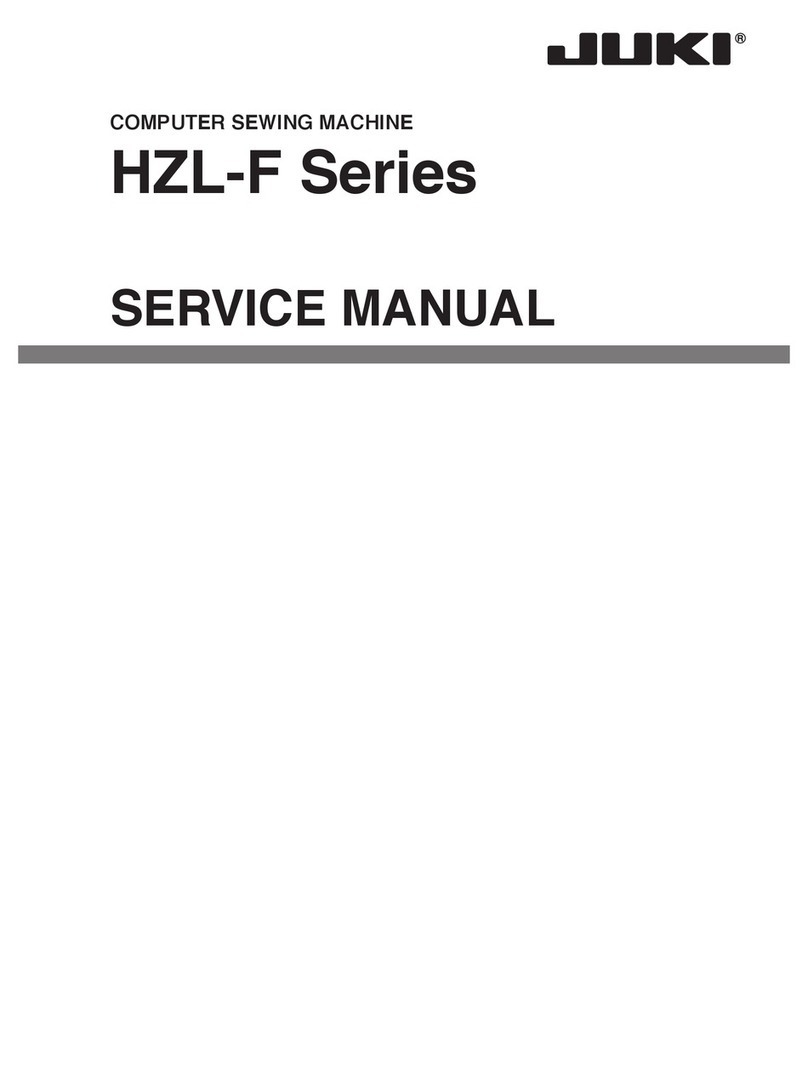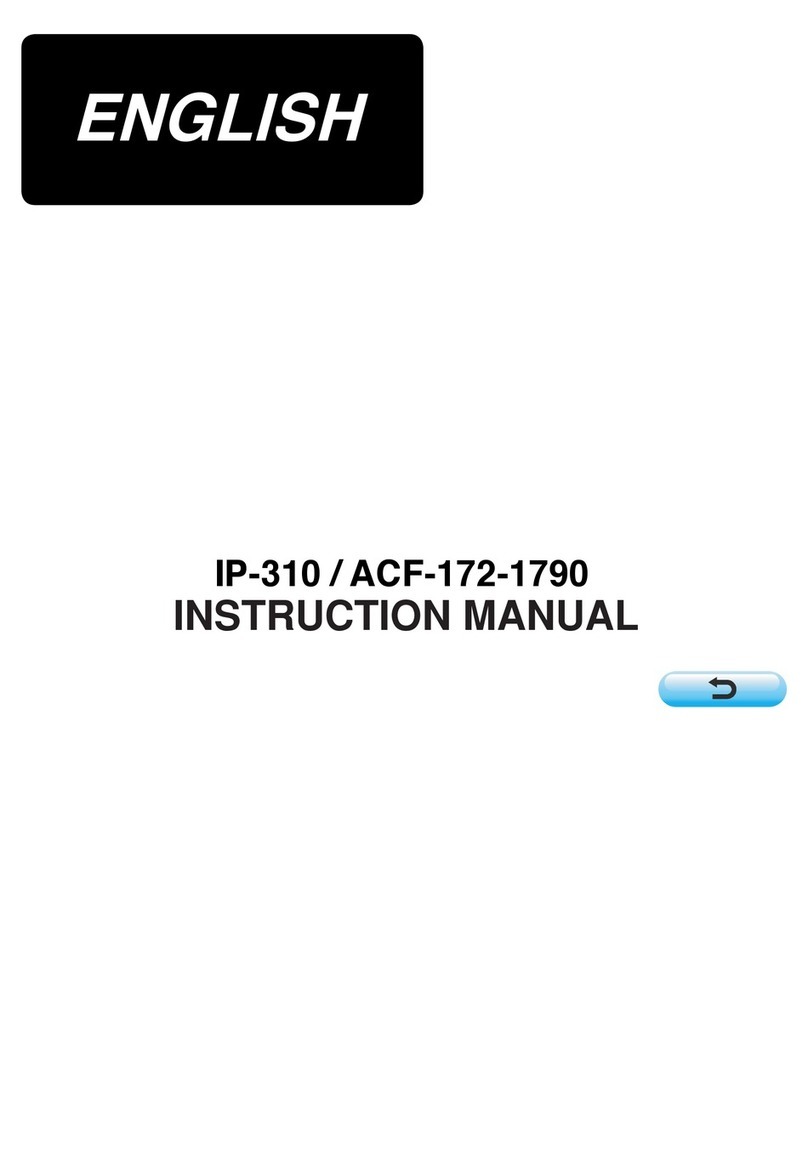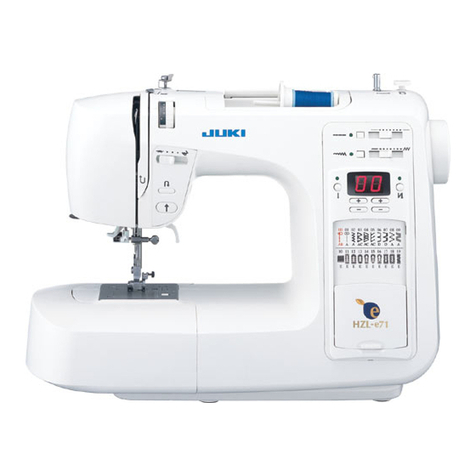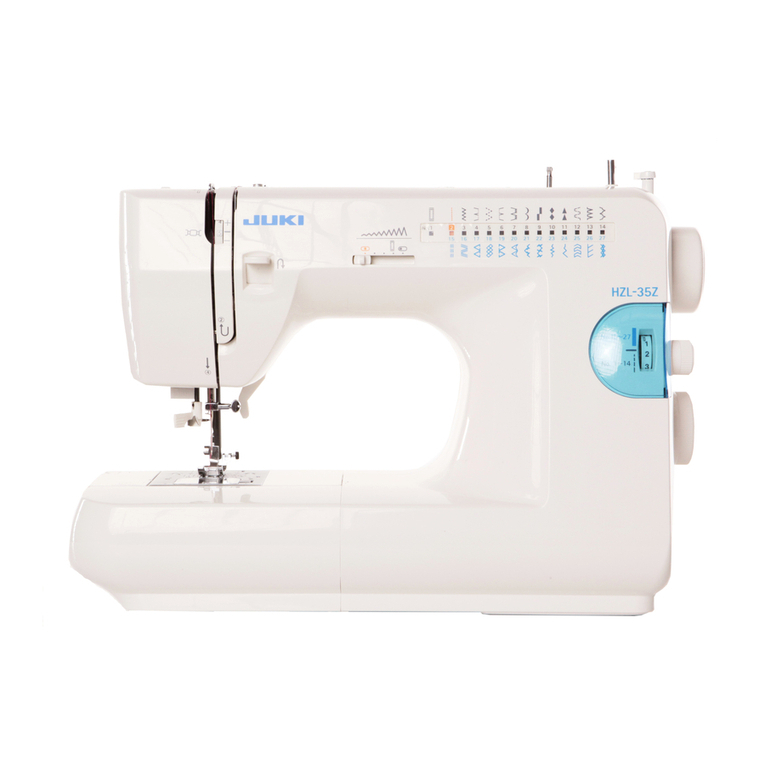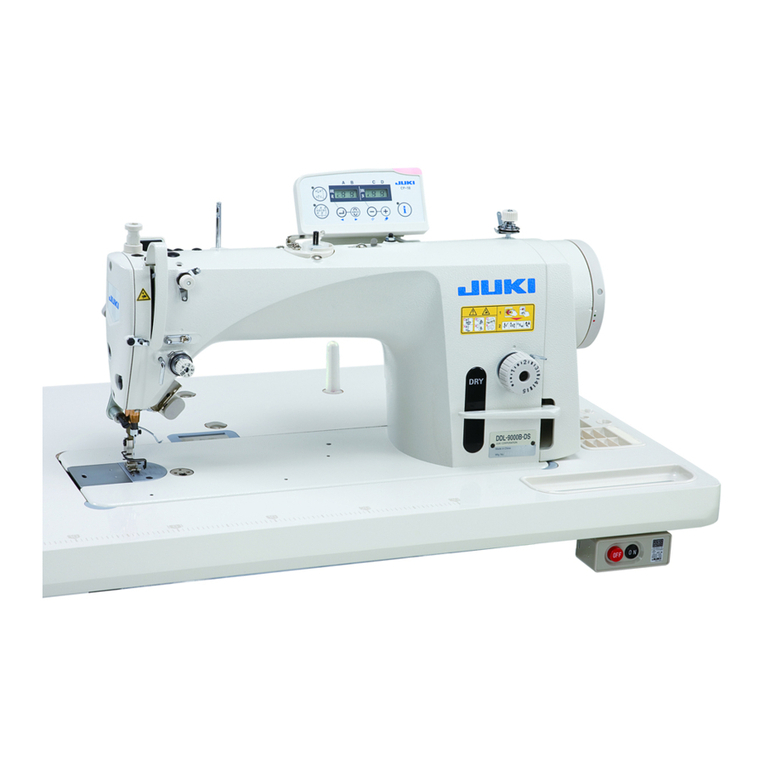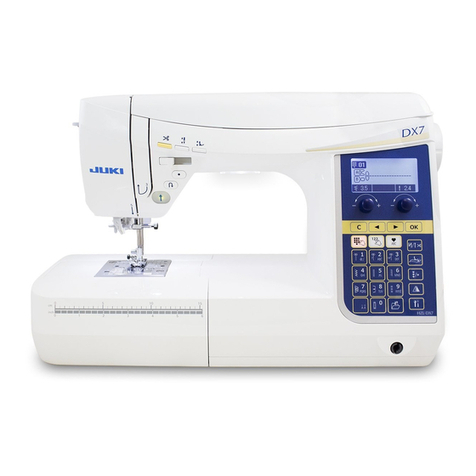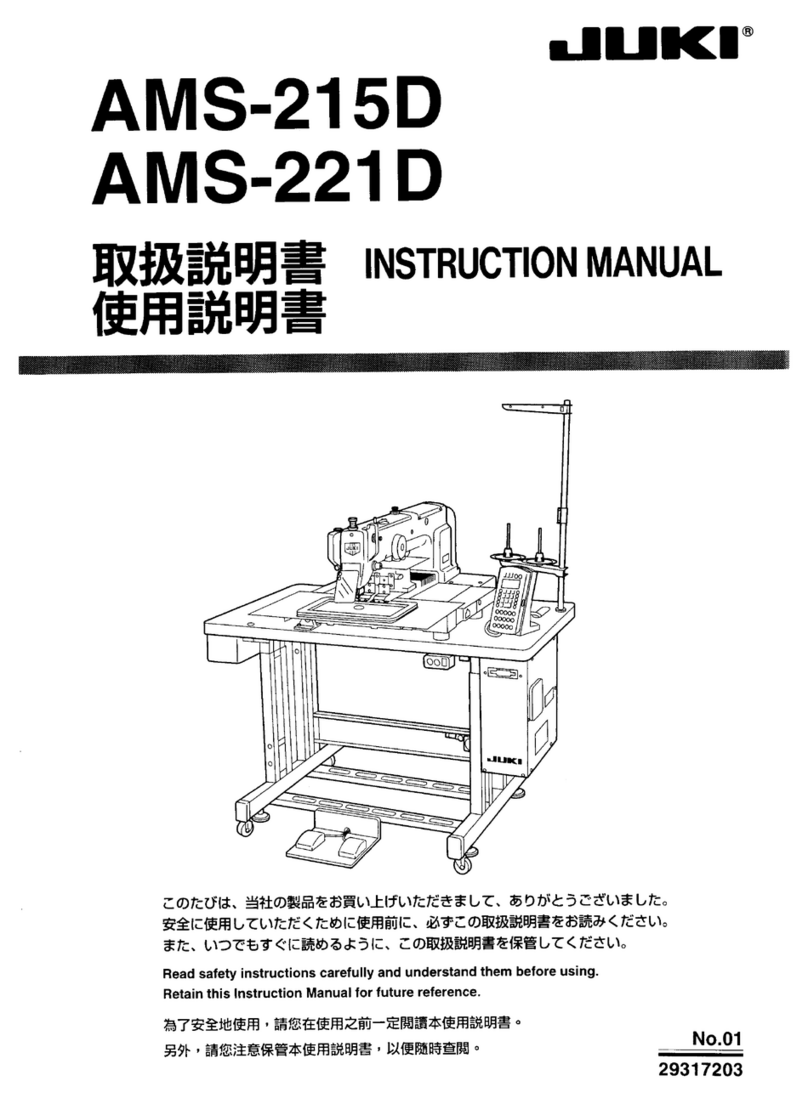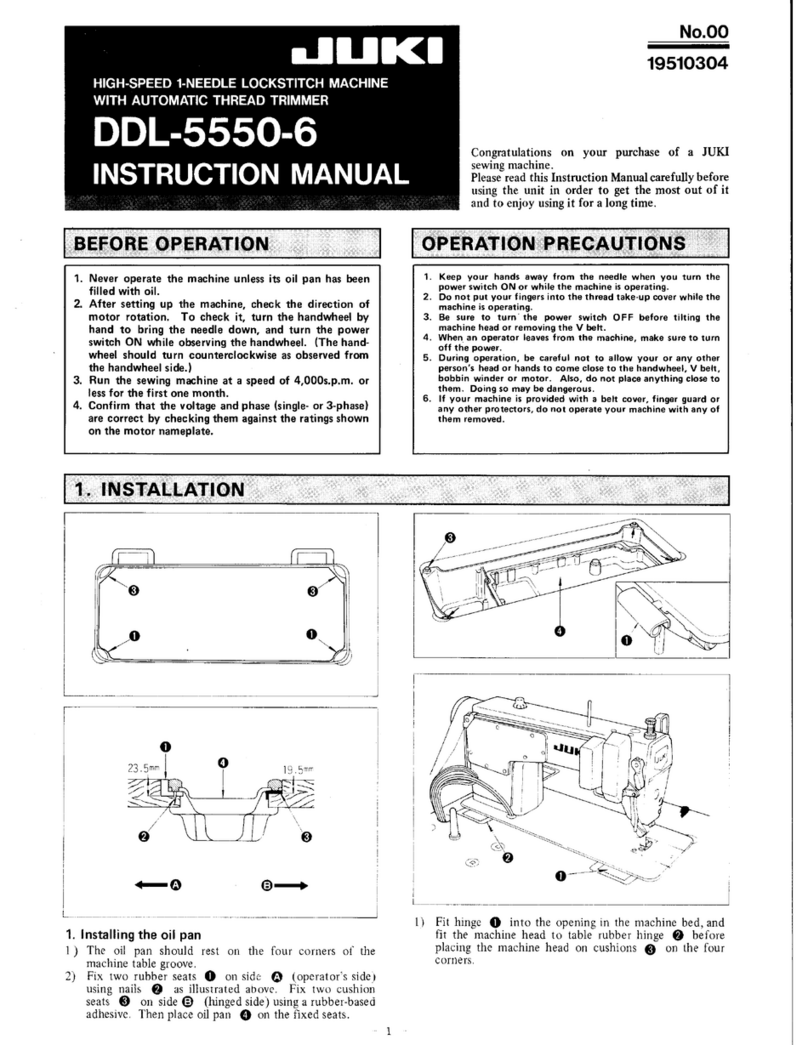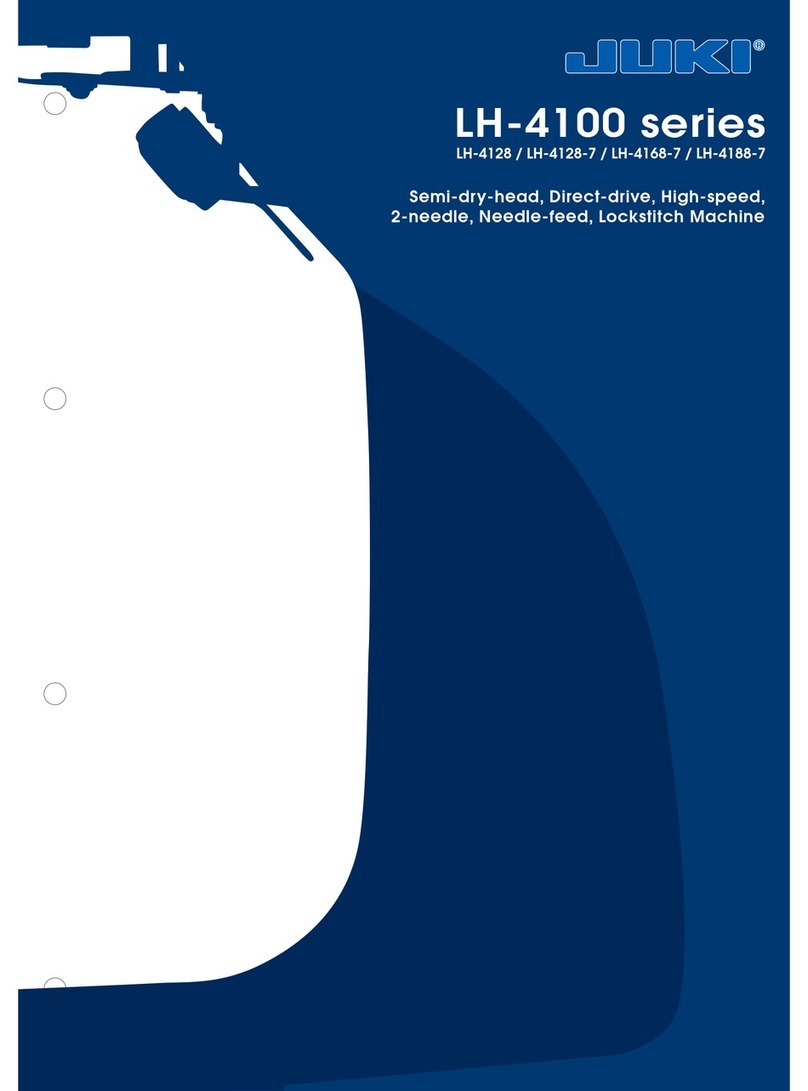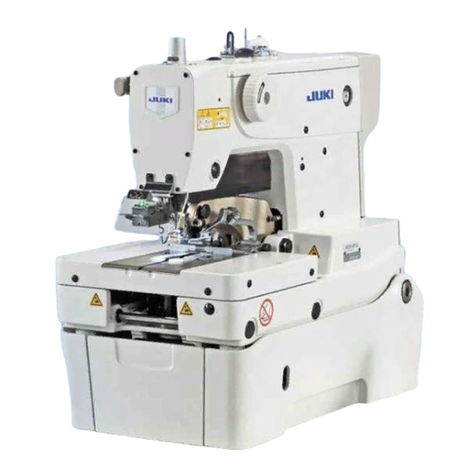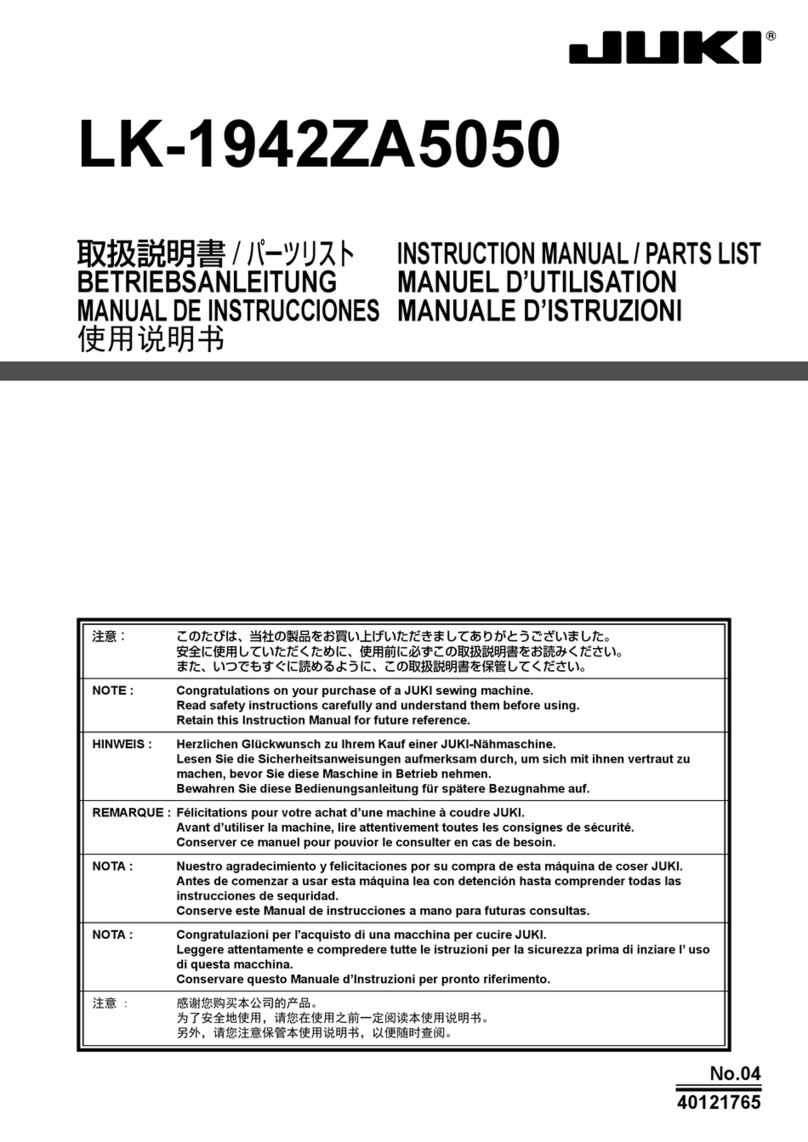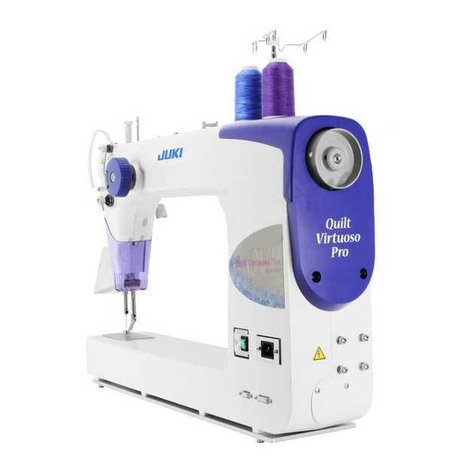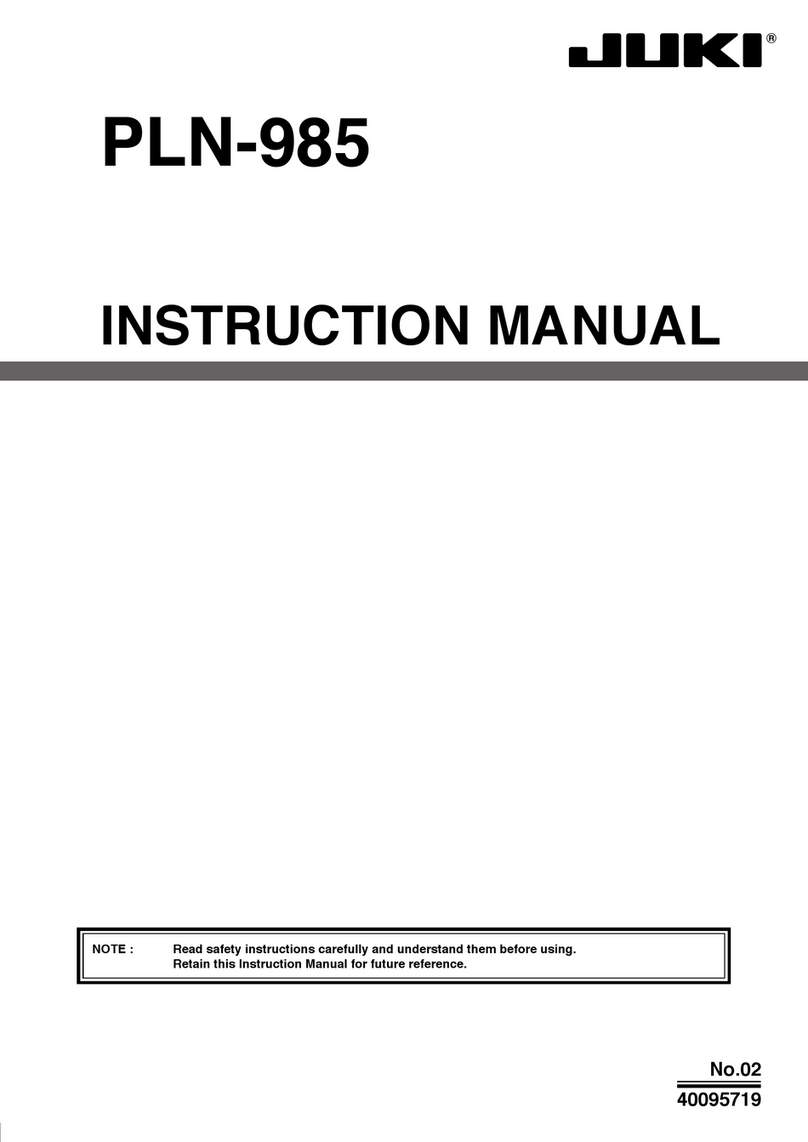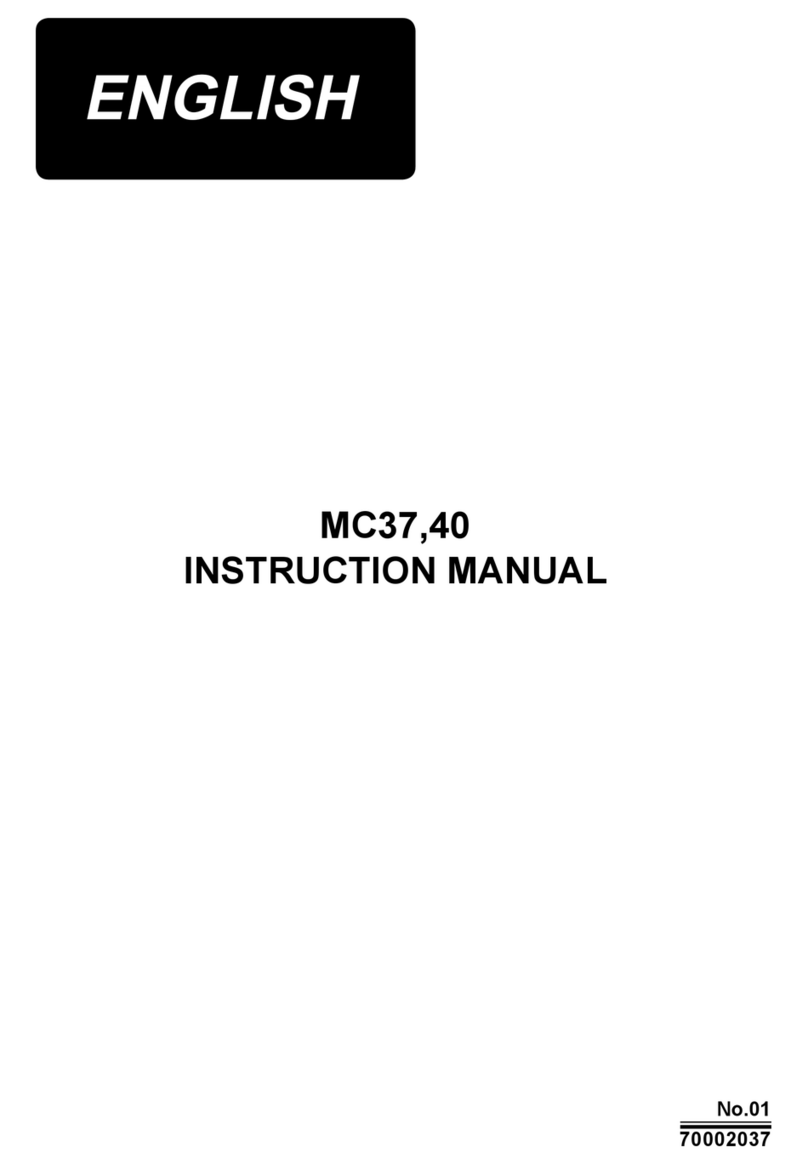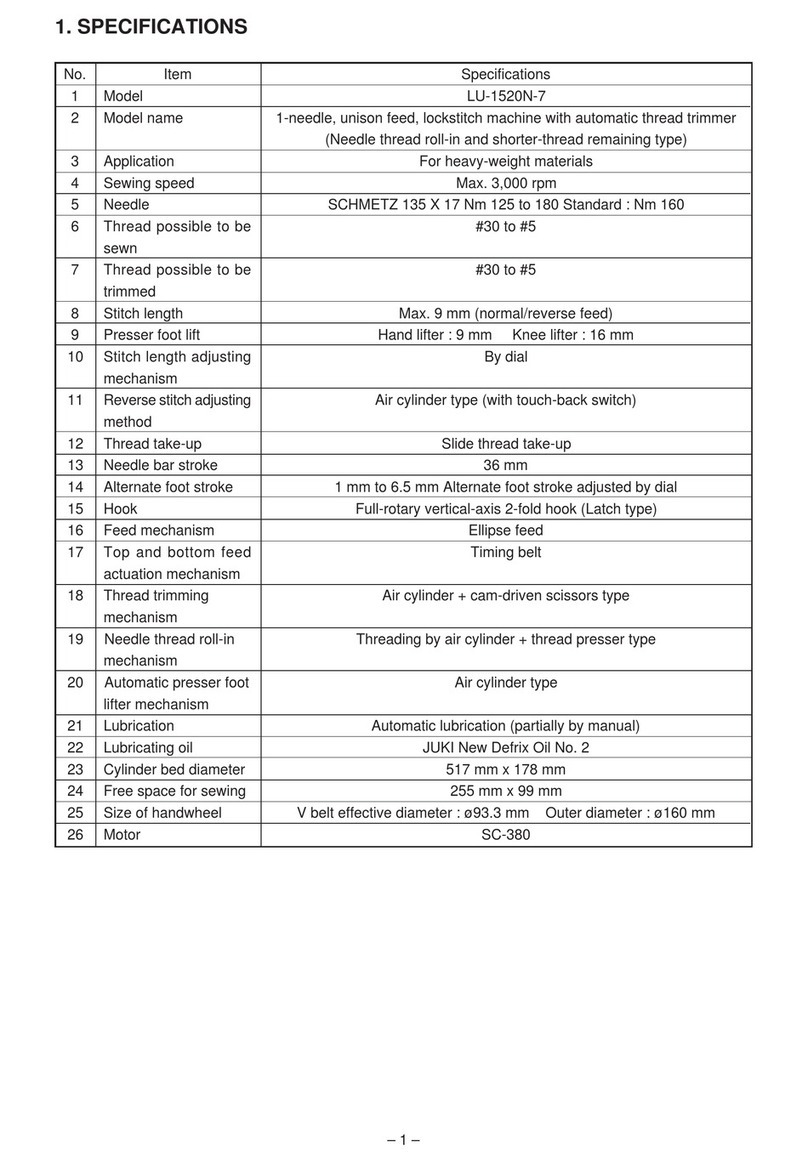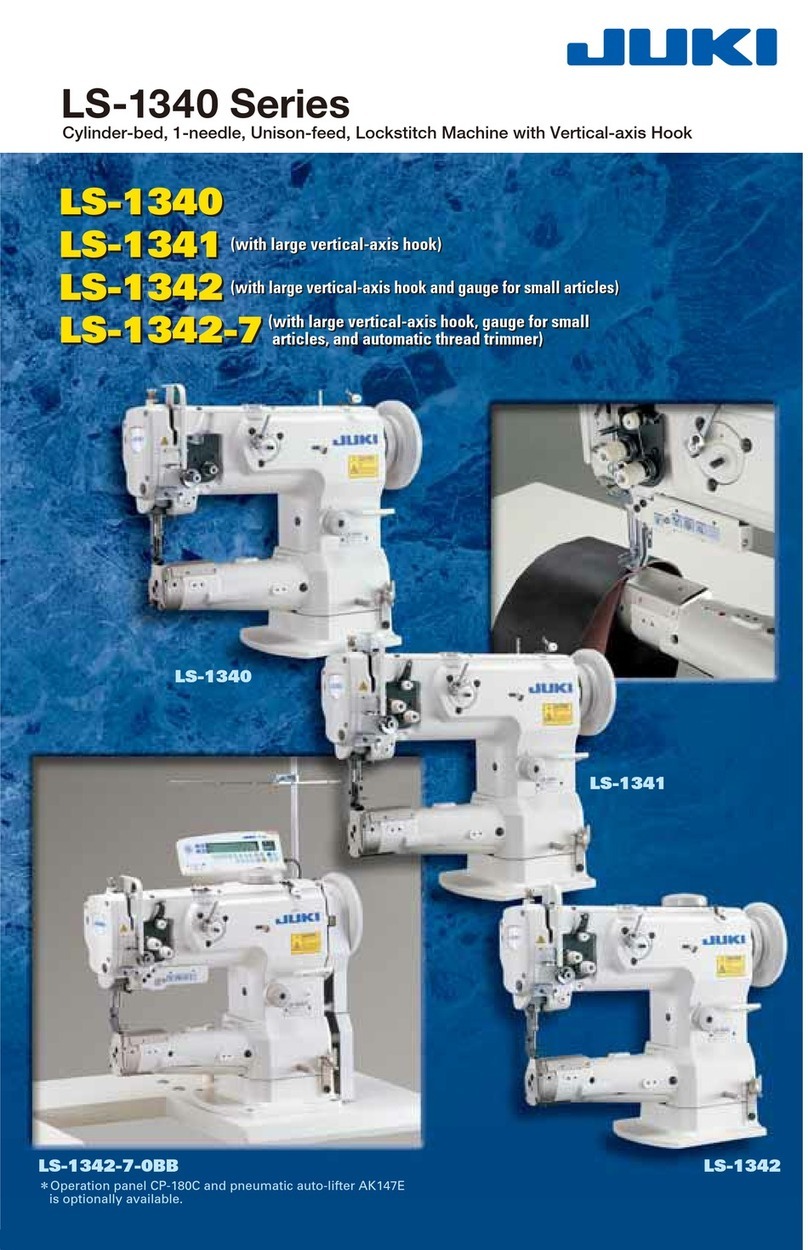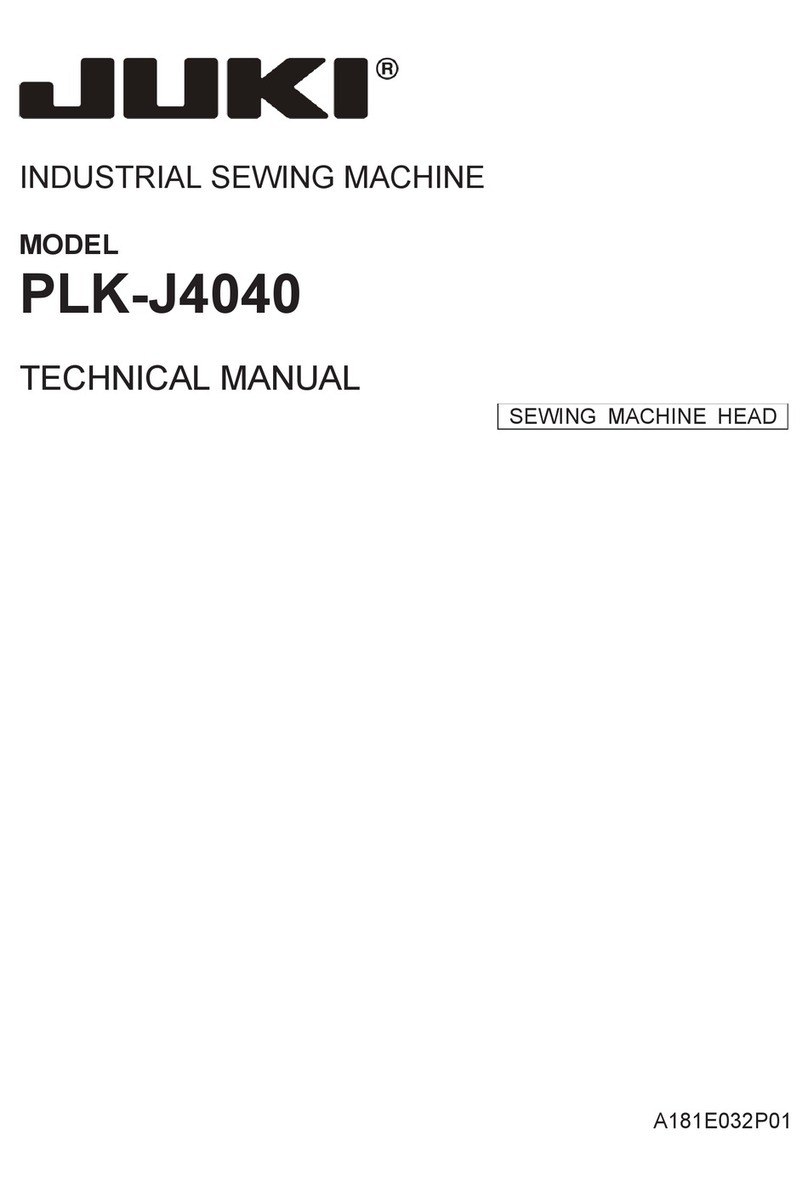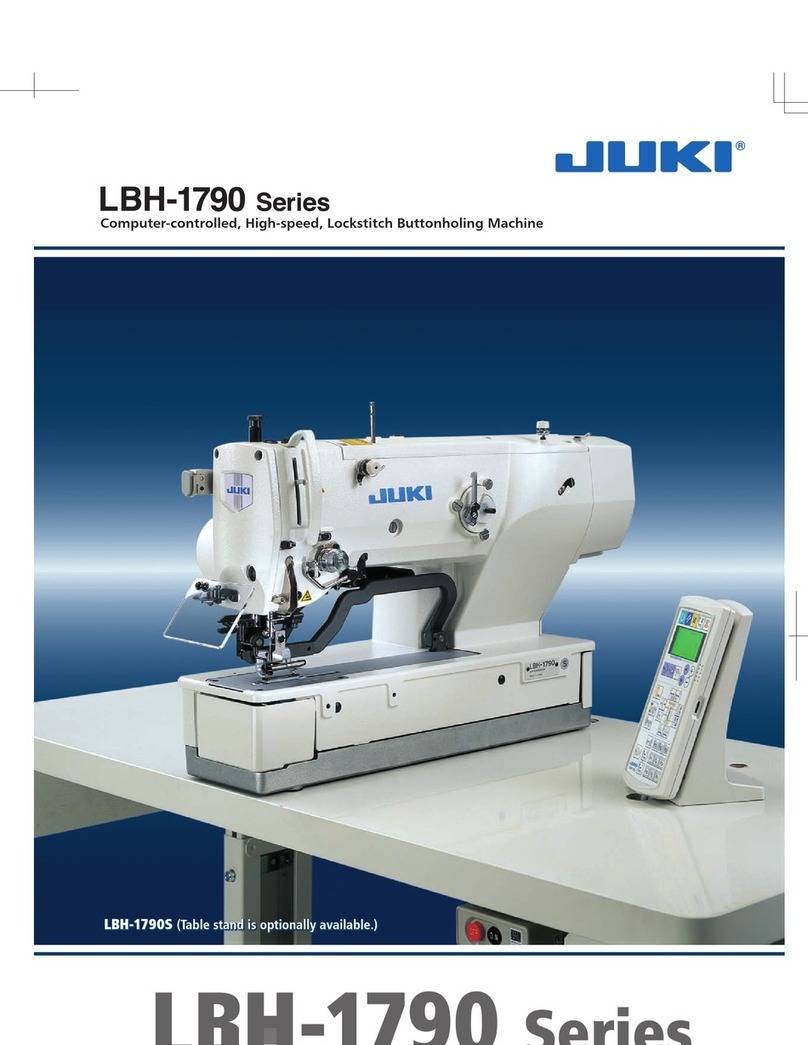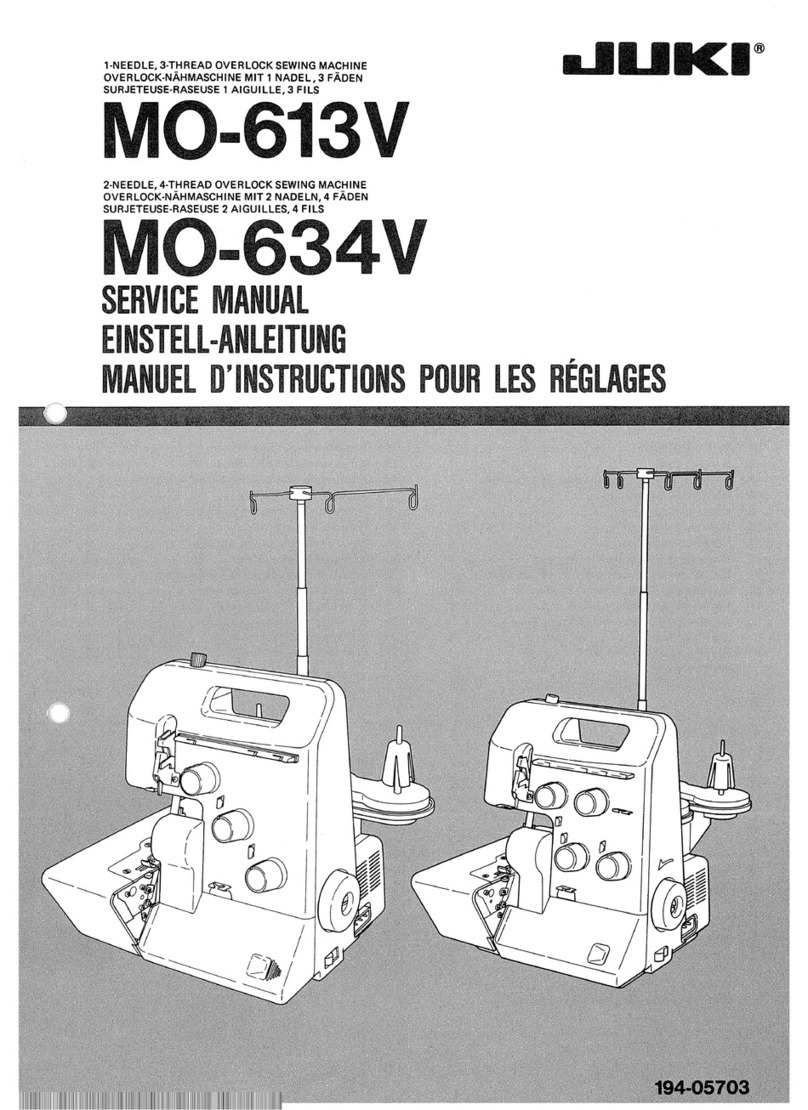CONTENTS
1. SPECIFICATIONS............................................................................................................ 1
2. NAME OF EACH COMPONENT ..................................................................................... 2
3. INSTALLATION................................................................................................................ 3
3-1. Caution at the time of set-up ................................................................................................................................ 3
3-2. Installation of the sewing machine ...................................................................................................................... 4
3-3. Adjusting the height of the knee lifter ................................................................................................................. 6
3-4. Installation of thread stand................................................................................................................................... 6
4. PREPARATION OF THE SEWING MACHINE ................................................................7
4-1. Method of lubrication ............................................................................................................................................ 7
4-2. Lubrication to the oil tank..................................................................................................................................... 8
4-3. Adjusting the amount of oil in the hook .............................................................................................................. 9
4-4. Oil in the feed box ................................................................................................................................................. 9
4-5. Applying grease................................................................................................................................................... 10
4-6. Installing the belt cover and the bobbin thread winder ................................................................................... 13
4-7. Attaching the needles ......................................................................................................................................... 13
4-8. How to take out the bobbin case ....................................................................................................................... 14
4-9. Insertlng a bobbin in a bobbin case .................................................................................................................. 14
4-10. Threading the machine head............................................................................................................................ 15
4-11. Thread tension ................................................................................................................................................... 16
4-12. Thread take-up spring....................................................................................................................................... 17
4-13. Adjusting the stitch length ............................................................................................................................... 18
4-14. Needle-to-hook relation .................................................................................................................................... 18
4-15. Adjusting the needle stop position.................................................................................................................. 20
4-16. Pedal pressure and pedal stroke ..................................................................................................................... 21
4-17. Adjustment of the pedal.................................................................................................................................... 21
5. OPERATION OF THE SEWING MACHINE .................................................................. 22
5-1. Pedal Operation ................................................................................................................................................... 22
5-2. Hand lifter............................................................................................................................................................. 22
5-3. Adjusting the pressure of the presser foot ....................................................................................................... 23
5-4. Micro-lifter ............................................................................................................................................................ 23
5-5. Thread tension release changeover when using the knee lifter ..................................................................... 24
5-6. One-touch manual reverse feed (One-touch reverse feed type)..................................................................... 24
6. MAINTENANCE ............................................................................................................. 25
6-1. Changing procedure to bottom feed and the adjustment ............................................................................... 25
6-2. Changing procedure to needle feed and the adjustment ................................................................................ 26
6-3. Adjusting the hook needle guard....................................................................................................................... 27
6-4. Adjusting the inner hook guide.......................................................................................................................... 27
6-5. Adjusting the height and the inclination of the feed dog ................................................................................ 28
6-6. Replacing the gauge ........................................................................................................................................... 29
6-7. Adjusting the thread presser spring.................................................................................................................. 30
6-8. Adjusting the position of the moving knife....................................................................................................... 31
6-9. Position of the wiper ........................................................................................................................................... 32
6-10. Caution when installing the attachments........................................................................................................ 32
6-11. Replacing the bobbin thread slack preventer sprlng (For LH-3568, 3568-7) ............................................... 33
6-12. Stop of the needle bars and angle of corners for corners stitching (For LH-3568, 3568-7) ....................... 33
7. STITCH-TO-ANGLE TABLE BY GAUGE (PITCH AND mm CONVERSION TABLE).. 34
8. GAUGE SETS................................................................................................................ 35
9. TROUBLES AND CORRECTIVE MEASURES ............................................................. 40
10. MOTOR PULLEY AND BELT ...................................................................................... 41

